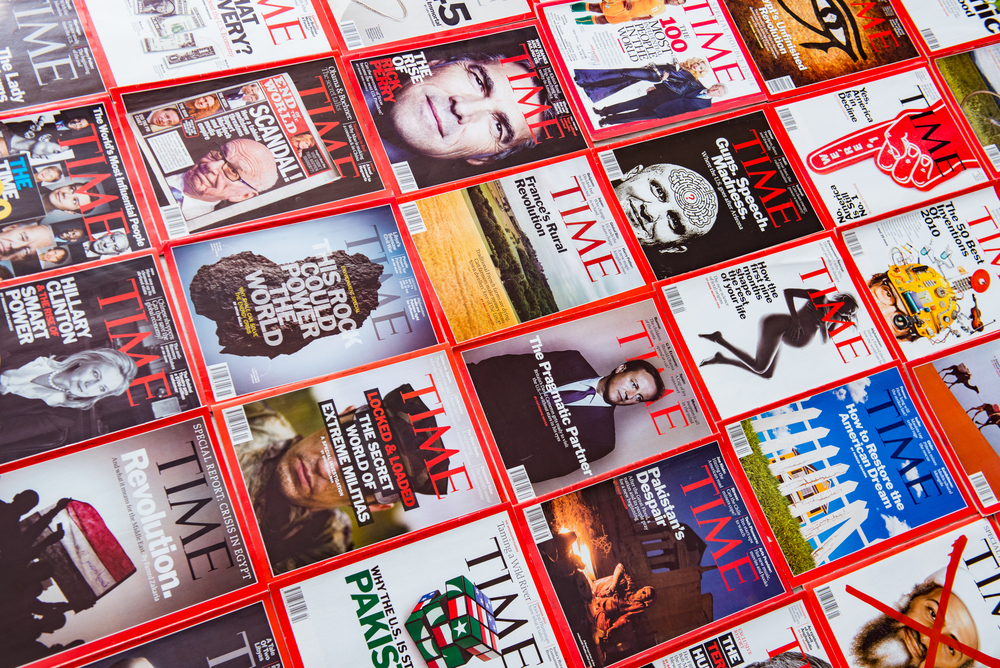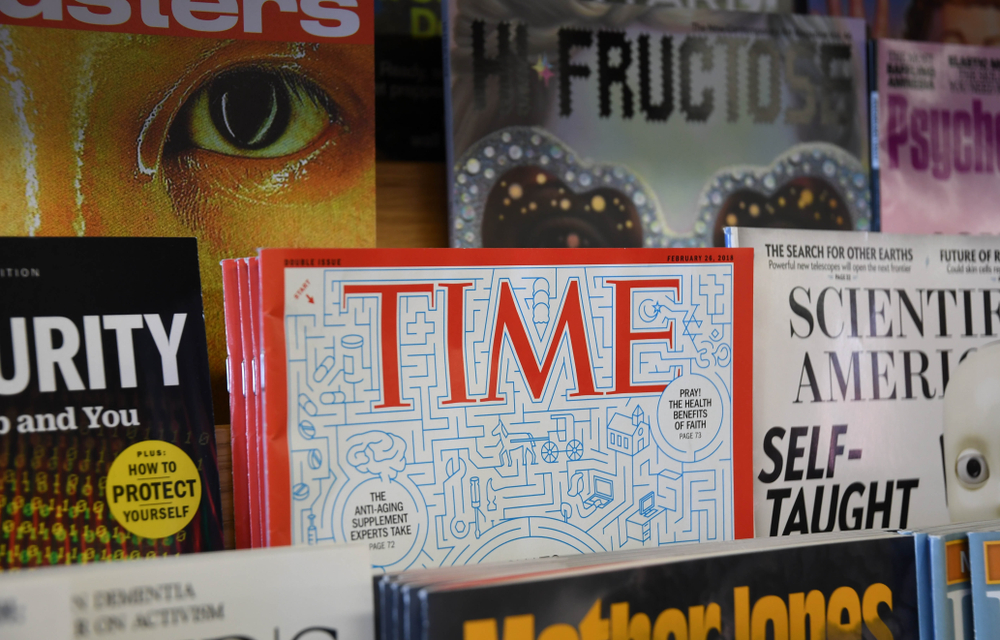Your cart is currently empty!
Trump Blasts TIME Magazine for Unflattering Cover Photo

Donald Trump just returned from what many called a victory lap through the Middle East. His administration brokered a Gaza ceasefire that could define his second term. TIME Magazine celebrated his diplomatic win with a glowing cover story. Everything should have been perfect.
Except for one problem: the photo. Within hours of the cover’s release, Trump took to Truth Social with a complaint that sent ripples across political and media circles. He didn’t hold back. What followed was a cascade of reactions from political rivals, foreign officials, and internet conspiracy theorists who found their own reasons to obsess over a single magazine cover.
President Calls Out “Super Bad” Cover Photo
Trump pulled no punches in his assessment of TIME’s November cover. “Time Magazine wrote a relatively good story about me, but the picture may be the Worst of All Time,” he wrote on Truth Social.
His grievances were specific. He claimed the magazine “disappeared” his hair and left “something floating on top of my head that looked like a floating crown, but an extremely small one.” He added that he never enjoyed taking pictures from underneath angles and called the image “super bad.”
Questions punctuated his post: “What are they doing, and why?”
Credit went to photographer Graeme Sloane, who shot the image for Bloomberg at the White House on October 5. Sloane captured Trump from below with bright sunlight positioned directly behind the president’s head. Anyone familiar with photography knows what happens next.
What Made Him Look So Unusual
Backlighting creates a halo effect. When strong light sources sit behind a subject, overexposure washes out details. In Trump’s case, his hair appeared to vanish in the brightest areas. What remained gave the impression of a small, floating crown hovering above his head.
Low angles rarely flatter anyone. Shooting upward emphasizes chins, necks, and nostrils while compressing facial features in ways most people find unflattering. Trump’s chin and neck bore the brunt of this geometric reality. California Governor Gavin Newsom noticed. His press office tweeted a version of the cover with Trump’s neck area pixelated, turning the president’s vanity into political mockery.
Carly Earl, Guardian Australia’s picture editor, offered a professional perspective on why TIME’s editors made their choice. “They picked this image because they wanted Trump to look heroic,” she explained. “Staring up at someone gives a sense of their grandeur and Trump’s face actually looks contemplative and almost slightly angelic.”
Earl noted how rarely Trump appears in serene moments. From a technical standpoint, she found the photo good. Conceptually strong. But aesthetics told a different story. “No one likes being photographed from below,” she said, “and while all of the conceptual elements of the image are very strong, the aesthetics are not flattering.”
Yet that tension between concept and vanity is exactly what made this cover newsworthy beyond its intended celebration of diplomatic achievement.
Irony Behind His Triumph Cover

Irony dripped from every pixel of this controversy. TIME’s cover story praised Trump’s administration for sealing the Gaza ceasefire deal. Headlines read “His Triumph,” “The leader Israel needed,” and “How Gaza heals.” Words inside the magazine celebrated what the publication called “painstaking efforts” to quiet one of the world’s most destabilizing conflicts.
Some critics suggested TIME offered an uncritically positive portrait of Trump’s Middle East efforts. Yet even that glowing assessment couldn’t satisfy the president. His focus remained locked on the photo angle and lighting choices rather than the diplomatic victory being celebrated.
Timing made the situation even more peculiar. TIME released the cover on Monday as Trump touched down in Israel to meet families of returning hostages and address the Knesset. He then flew to Sharm el-Sheikh for an Egypt summit aimed at supporting the ceasefire and developing a longer-term vision for governing and rebuilding Gaza.
Egyptian leader Abdel Fattah el-Sissi, co-chairing the summit, told Trump, “only you” can bring peace to the region. During his Knesset address, Trump received sustained applause and outpourings of support. He spoke about how the region has “a once in a lifetime chance to put the old feuds and bitter hatreds behind us.”
All of that success, all of that international praise, all of those diplomatic wins seemed to matter less to Trump than how his hair looked on a magazine cover.
Decades of TIME Magazine Obsession

Anyone surprised by Trump’s reaction hasn’t been paying attention. His relationship with TIME Magazine spans decades and borders on fixation.
He landed his first TIME cover in January 1989. Since then, his face has appeared on more than 40 covers. In 2017, Trump falsely claimed to hold “the all time record in the history of Time magazine.” He doesn’t. That same year revealed just how deep his fascination runs when reporters discovered fake TIME covers hanging in at least five of his golf clubs.
Staff from the magazine asked him to remove them. Real covers apparently weren’t enough.
TIME named Trump Person of the Year twice, once in 2016 after his first presidential victory and again in 2024 just before his second inauguration. He called the second honor “tremendous.” Other finalists that year included Kamala Harris, Princess Catherine, Joe Rogan, Elon Musk, Benjamin Netanyahu, Mark Zuckerberg, Yulia Navalnaya, Claudia Sheinbaum, and Jerome Powell.
Beating that list meant something to Trump. Getting a bad photo on the cover apparently meant even more.
His decades-long pursuit of TIME recognition speaks to something deeper than simple vanity. Magazine covers represent cultural validation, historical importance, and mainstream acceptance. For someone who built a brand on image and perception, each cover serves as tangible proof of relevance. But relevance comes with a price: editors choose the photos.
Political Rivals Jump on Photo Flap

Governor Newsom’s pixelated neck mockery was just the beginning. Trump’s complaint handed political opponents ammunition wrapped in absurdity. How do you respond to a president complaining about his magazine photo while major international agreements hang in the balance? You mock him.
Defense came from an unexpected source. Maria Zakharova, director of information at Russia’s Ministry of Foreign Affairs, stepped in to criticize TIME’s “self-incriminating” image choice. She wrote on Telegram: “Only sick people, people obsessed with malice and hatred, perhaps even perverts, could have chosen such a photo.”
Zakharova went further, comparing Trump’s cover to past covers featuring Joe Biden. She suggested TIME used “complimentary photos” for Biden despite his “physical infirmity.” Her comments injected international political theater into what started as a domestic media spat.
Foreign ministry officials rarely weigh in on American magazine photography. Zakharova’s intervention suggested Trump’s image concerns resonated beyond U.S. borders, or at least provided useful propaganda material for foreign governments looking to critique American media.
Political adversaries at home found the whole episode too rich to ignore. Here was a president fresh from brokering Middle East peace, complaining about hair and camera angles. Comedians didn’t need to write jokes. Trump wrote them himself.
Conspiracy Theorists Seize New Ammunition
While politicians mocked and diplomats defended, a different group found their own reasons to study the TIME cover: conspiracy theorists fixated on Trump’s ear.
On July 13, 2024, during a Pennsylvania rally, 20-year-old Thomas Matthew Crooks fired at Trump. One bullet grazed the president’s ear and killed another attendee. Ever since, skeptics have questioned whether the shooting was real or staged. Each new photo of Trump becomes fresh evidence to examine.
Social media users jumped on the TIME cover. “Where is the bullet wound???” one Twitter user asked. Another wrote, “That ear has never been shot. Cartilage does not come back, and if doctors did fix it there would be a scar.”
Defenders offered explanations ranging from natural healing to plastic surgery to photo editing. But conspiracy theorists found what they wanted: questions without answers and another chapter in their alternative narrative.
Trump himself never mentioned his ear. He complained about his hair. His critics mocked his neck. Internet sleuths searched for missing scars. Everyone found something different to see in the same photo.
A single magazine cover became a Rorschach test. TIME editors wanted to show heroism. Trump saw bad lighting. Political rivals saw mockery potential. Conspiracy theorists saw cover-ups. Photography, like politics, depends on perspective. Sometimes triumph looks different from what you imagined, even when the words say you won.
A Single Photo Tells Many Stories
A magazine cover, intended to celebrate a major diplomatic success, instead became a political spectacle. Donald Trump’s extreme focus on his image—calling the photo the “Worst of All Time”—underscored his long-standing obsession with TIME Magazine and external validation.
Ultimately, the controversy showed how deeply appearance and perception matter in modern politics. TIME editors tried to frame a heroic moment. Trump saw an unflattering angle that “disappeared” his hair. Political opponents quickly turned the picture into a tool for mockery. Even foreign diplomats and fringe conspiracy theorists found their own meaning in the way the light hit his head or the shape of his ear.
People often see what they want to see, and this single photograph acted like a mirror for every major faction in the political world. It showed that even an internationally praised achievement can get overshadowed when vanity meets a bad camera angle. The episode confirms that for Donald Trump, the visual presentation of success often speaks louder than the success itself.
